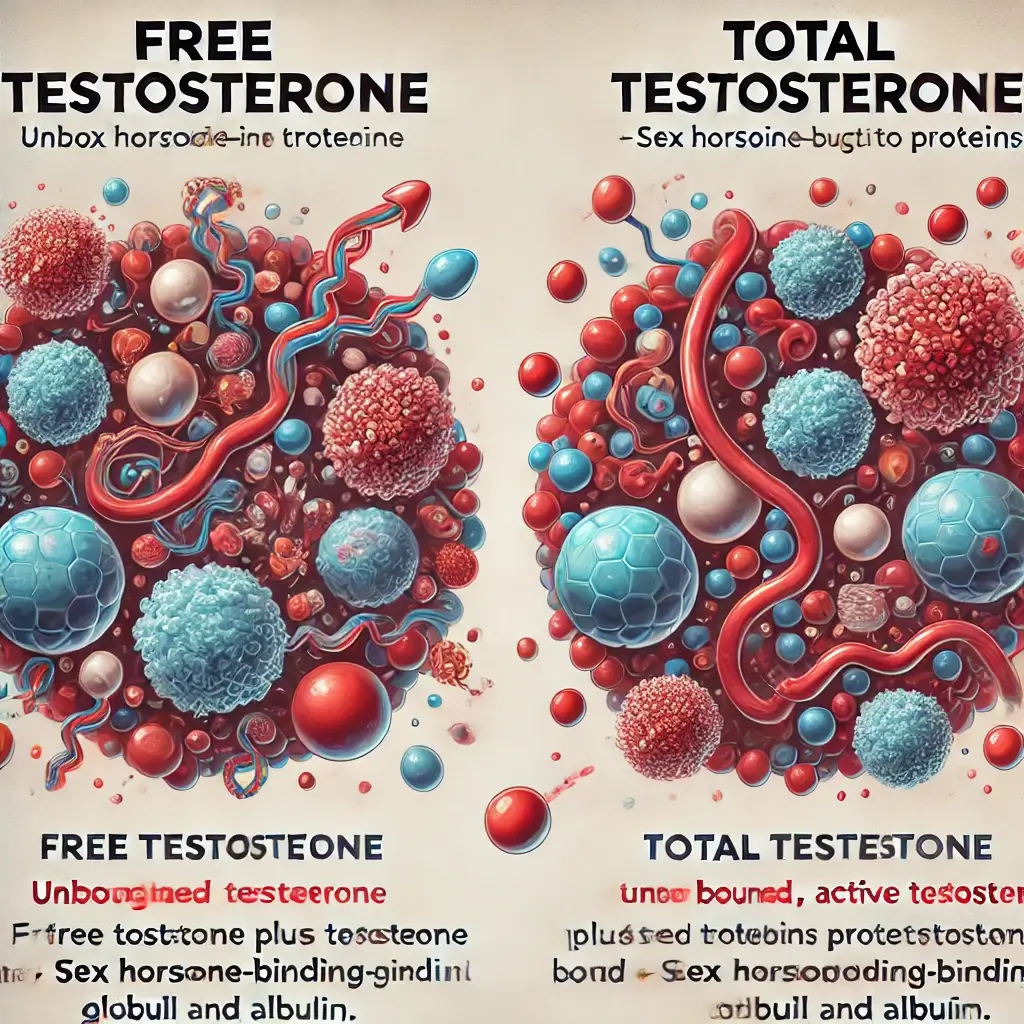Understanding Free and Total Testosterone
Both free testosterone and total testosterone are crucial for comprehending a man’s hormonal well-being, although they encompass distinct facets.
Unbound Testosterone Explained
Free testosterone refers to the unbound testosterone present in the bloodstream. The active form is easily accessible to your tissues, allowing it to have its effects throughout the body. It’s essential for a range of important bodily activities, such as sexual desire, muscle development, bone strength, and the formation of red blood cells.
Total Testosterone Defined
Total testosterone refers to the overall amount of testosterone present in the bloodstream, encompassing free testosterone and testosterone attached to proteins such as albumin and sex hormone-binding globulin (SHBG).
The Key Difference Between Free and Total Testosterone
Free testosterone is physiologically active and easily accessible for use by the body’s cells and tissues. It’s unbound to any proteins that would normally restrict its availability and effectiveness. Conversely, a considerable proportion of the overall testosterone is attached to other proteins, specifically SHBG, making it less readily accessible or utilized by the body’s target tissues and organs.
The Importance of Testosterone Balance
The equilibrium between free and protein-bound testosterone is a crucial determinant of the overall hormonal status and biological impacts of testosterone in the body. When the levels of unbound testosterone are adequate, the body can efficiently utilize this particular form of the hormone for multiple purposes, including the preservation of muscle mass, the regulation of sexual function, and the support of bone health.
Clinical Significance of Both Forms
When assessing a man’s testosterone status, doctors usually take into account both numbers. An elevated total testosterone level may appear favorable; however, if a significant portion is bound to SHBG, the amount of free testosterone accessible for use may be diminished. This can result in manifestations of hypogonadism despite having a supposedly within-normal range total testosterone level.
An Analogy for Better Understanding
Conceptualize testosterone as a space replete with plenty of seating arrangements. Free testosterone might be likened to unoccupied seats that are readily available for people to sit on. Bound testosterone might be likened to already occupied seats. Although a person may eventually vacate a chair, it is not immediately accessible to everyone.
Testosterone Testing Explained
A free testosterone test quantifies the levels of unbound testosterone, also known as active testosterone. A total testosterone test quantifies the aggregate number of seats in the room, encompassing both unoccupied and occupied. Both values offer a more comprehensive depiction when examined in conjunction.
Additional Considerations in Testosterone Evaluation
Normal ranges for free and total testosterone levels can differ based on age and the specific laboratory doing the test. Despite having testosterone levels within the established range, a male individual may nonetheless exhibit symptoms associated with low testosterone. A physician will consider this in conjunction with the findings of medical examinations.
When to Seek Medical Attention
If you are experiencing symptoms such as decreased sexual desire, inability to achieve or maintain an erection, persistent tiredness, or alterations in mood, it is advisable to seek medical advice. They can evaluate your condition, request blood tests to quantify levels of free and total testosterone, and explore appropriate therapy alternatives if necessary.
